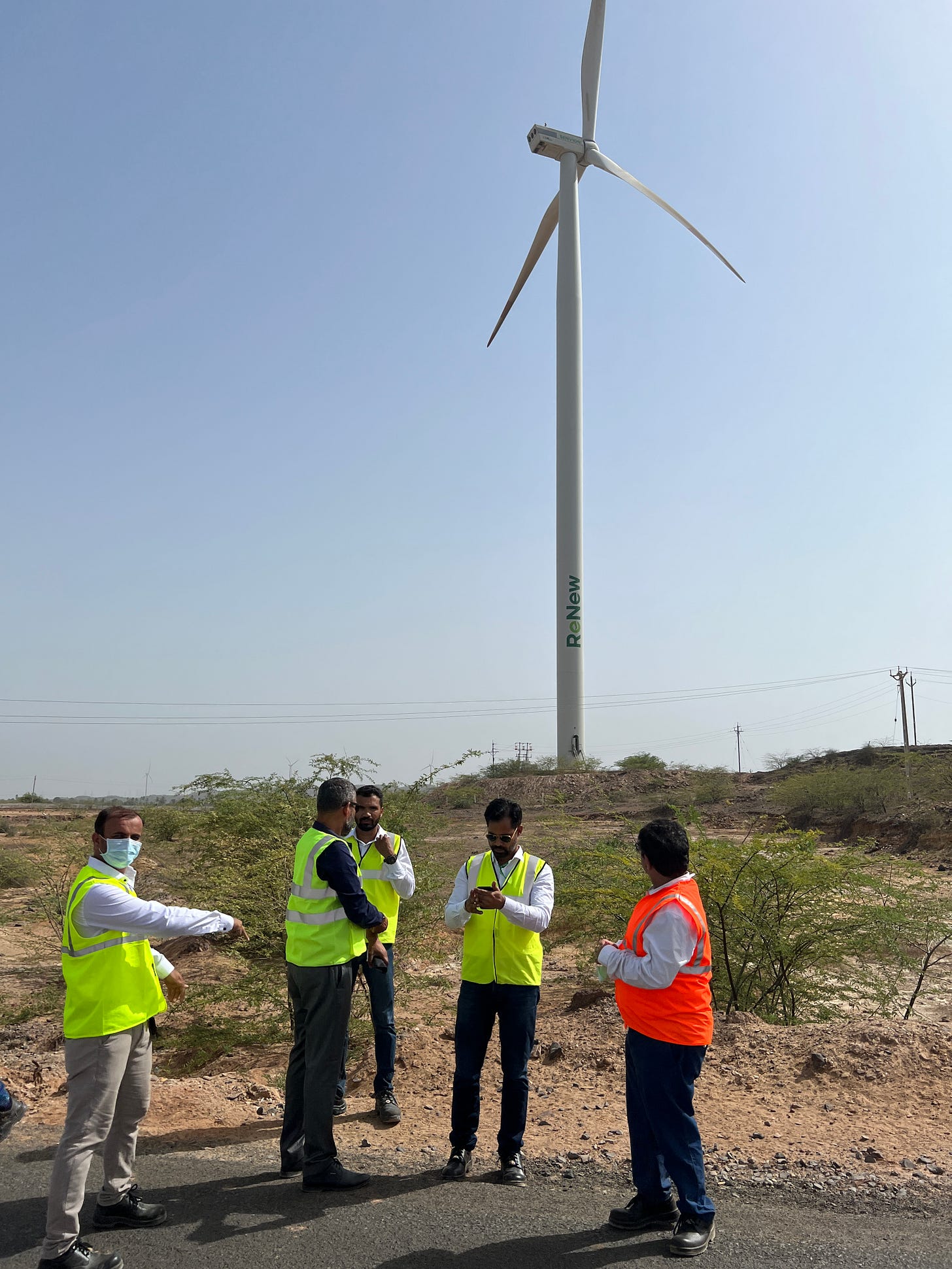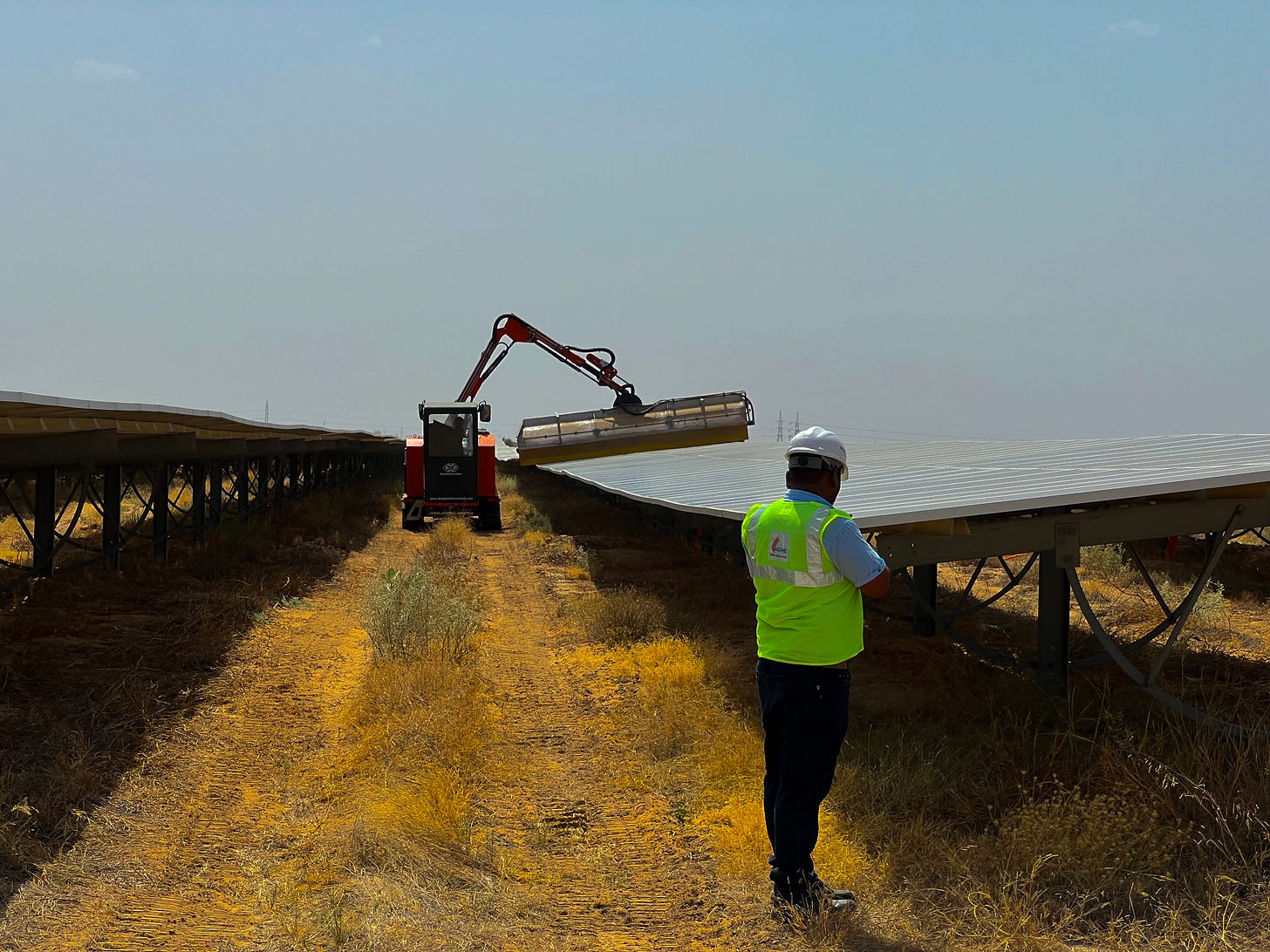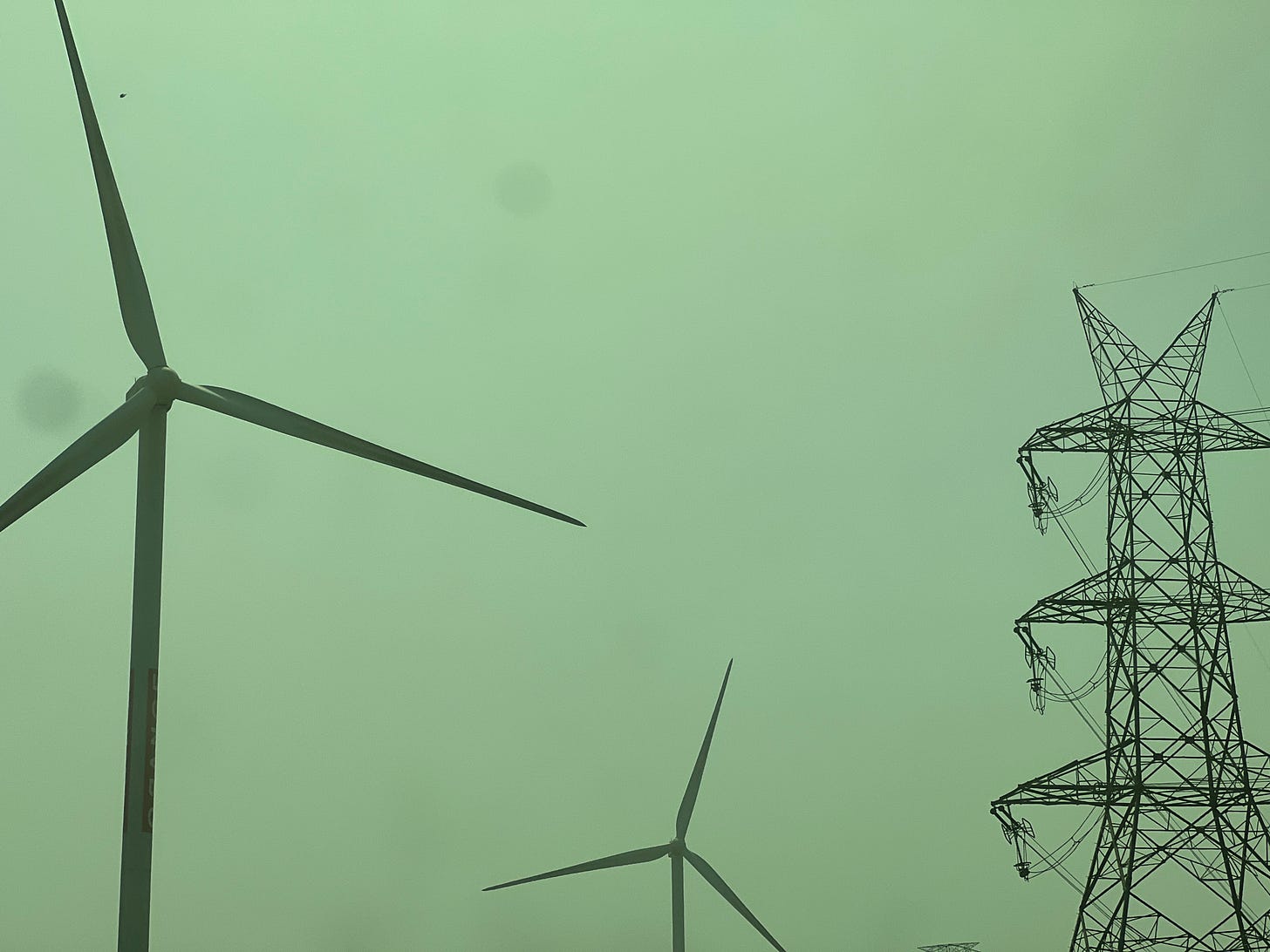India’s Renewables Heartland
Two states in the country’s northwest are powering rapid growth of clean energy
Much of India’s northwest is a scorching, windswept expanse of desert — precisely what the country’s renewable energy companies love about it.
In the state of Rajasthan, I visited the Bhadla solar park, among the largest in the world. ACME Group, one of India’s largest renewable energy companies, brought me out to visit the section of the expanse of arrays the company operates.
Beneath an unrelenting sun, solar panals covered the scrubby plain for as far as I could see. It was May, and afternoon temperatures already topped 120 degrees fahrenheit. It was easy to understand why Rajasthan has installed more solar capacity than any other Indian state. The state racked up almost half of all the renewable energy built in India through August, according to statistics compiled by Ember.
Just days later and a few hundred miles away in the state of Gujarat, I stared up at wind towers operated by another of India’s biggest renewable energy companies, ReNew Power. Gujarat, the other powerhost of India’s renewable energy boom, hosted almost two-thirds of the 1.1 gigawatts of new wind generation built in the country through August.
India has few crude oil deposits and little natural gas. Coal is plentiful, and at the moment the government is scrambling to mine and even import more of it. But burning coal contributes to global warming and has helped leave India with some of the most polluted air on the planet. Global prices for oil, natural gas and coal are soaring as the war in Ukraine scrambles supplies and the global economic bounce back from Covid has boosted demand. Yet despite the desperate scramble for fossil fuels — or, more accurately, because of it — their long-term appeal is waning rapidly. India would like nothing better than an alternative to dependence on volatile global energy markets.
“This is going to open up a whole lot of room for renewable energy,” says Sumant Sinha, the chairman and chief executive of ReNew Power, one of India’s leading renewable energy developers.
India has already expanded renewable energy faster than any other large country in the past decade. Solar power capacity has grown 60-fold in a decade, stunning industry insiders and skeptical observers alike. India has already installed almost 20% more renewable capacity so far this year than it did all of last year, bringing the total to more than 120 gigawatts. The government aims to install much, much more. India has publicly committed to producing half its power from renewable sources by 2030. That’s likely to mean adding at least three times more capacity, requiring the country to move two-and-a-half times faster in installing renewables in the time remaining.
What’s driving this expansion? Few countries have benefited more from plummeting renewable energy costs over the past two decades.
India began growing solar installations around 2010, a decade after Germany kicked off the world’s first huge renewable energy push. Between 2008 and 2013, Germany increased its solar generating capacity six fold — at first relying on German solar panel manufacturers, but then increasingly turning to Chinese makers. Chinese manufacturers, backed by a torrent of government subsidies, cut prices aggressively, scooping up orders from Germany and eventually China’s own burgeoning solar installations. This won them economies of scale and drove costs ever lower.
For India this was a windfall. It adopted a novel reverse-auction format for handing out solar projects. Developers, snapping up ever-cheaper Chinese solar equipment, competed by bidding down the price of the renewable electricity they offered for sale.
The winning bids marched relentlessly lower, to a record-low 1.99 rupees in one auction in 2020 from as much as 18 rupees per kilowatt hour in 2010. This stunning 89 percent drop beat the overall worldwide decline of about 80 percent. Wind projects saw similar, if not quite as steep, cost reductions of more than 50 percent.
India suddenly had some of the lowest prices for renewables on the planet. At the landmark Paris Conference of 2015, India put renewables at the center of its energy expansion plans.
That push, however, still leaves the future of coal, which accounts for two-thirds of India’s power generating capacity, hanging in the balance. Coal can decline precipitously after 2030 only if India meets its renewable energy goals, and then utilizes that foundation to push green energy to still far higher levels after that.
That’s a daunting task. It will require overcoming homegrown stumbling blocks such as the staggering debts of electric utilities as well as the international challenge of weaning itself off what India now sees as a dangerous dependence on Chinese solar equipment.
By 2018 solar power reached a historic milestone, beating out coal to become India’s least expensive energy source. That was huge — even though solar and wind couldn’t yet replace coal because they’re available only when the sun is shining or the wind is blowing. Last year, India was the world’s best emerging market for investment in renewables, in a ranking by Bloomberg New Energy Finance.
Yet India’s historic push into renewables has reached a challenging juncture. One of the biggest beneficiaries of plummeting renewable energy costs over the past decade, India’s green energy push must now traverse a landscape of new obstacles and opportunities. These include sweeping changes in the dynamics of global trade and energy security sparked by Russia’s invasion of Ukraine, as well as domestic challenges to accelerating the growth of renewables.
Still, renewable costs will likely remain well below the cost of coal, especially the higher quality coal India must import from places like Indonesia and Australia, industry officials say. Indeed, for the first time, India is beginning to view renewable energy not just as low-cost, but also as a route to more energy independence and even a shot at becoming a significant energy exporter someday.
To eventually replace coal, however, renewables will need to deliver power on demand, around the clock and in forms that can fuel industrial processes like cement and steel manufacturing.
Just as the Indian government is wielding carrots and sticks to spur solar panel manufacturing, it has launched a major new program to incentivise the manufacture and utilization of storage systems. And it is pushing a plan to spur the production of green hydrogen from renewable energy at a massive scale. The government is also aiming to expand wind energy production off India’s extensive coastline, attempting again to ride a wave of falling global costs.
The first large-scale storage projects are still on the drawing boards, but they have been tendered and are underway.
“Once you have round-the-clock renewables, that’s renewables plus storage, that are viable, then that’s the end of the story for fossil fuels,” India’s Power and Renewable Energy Minister Raj Kumar Singh recently told an international audience.








